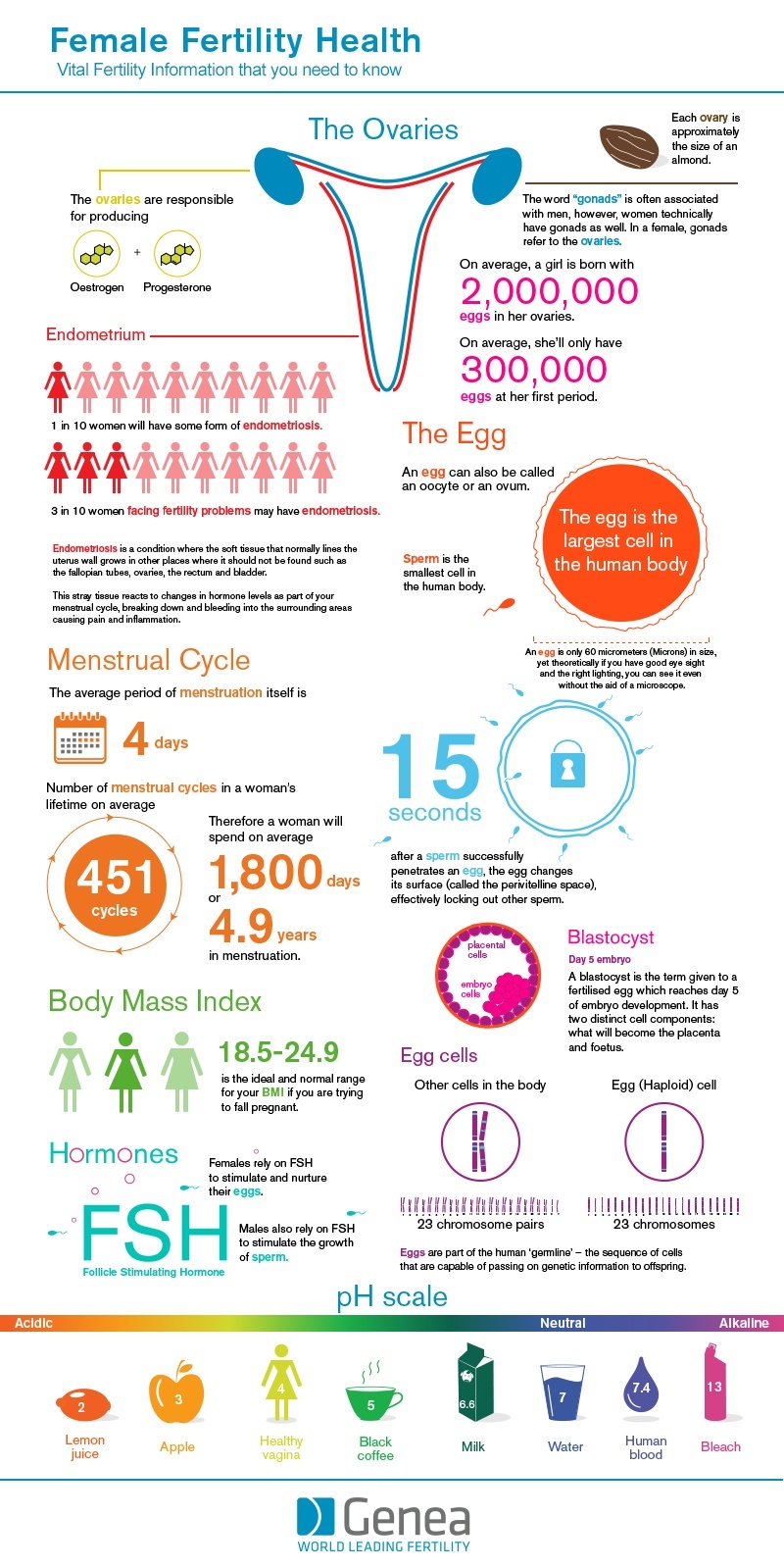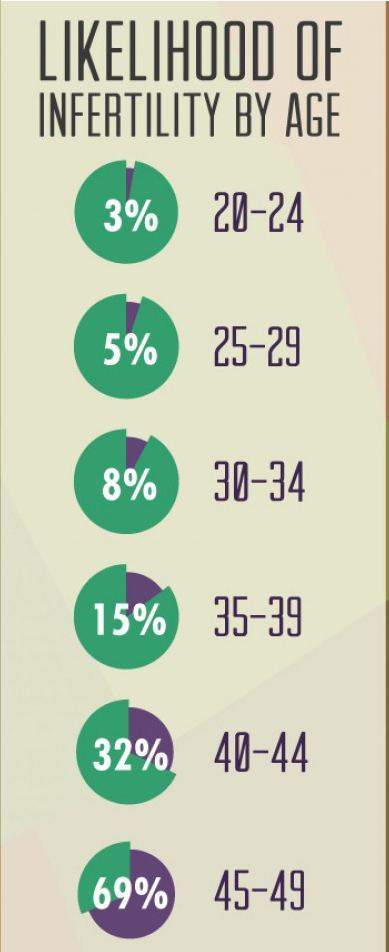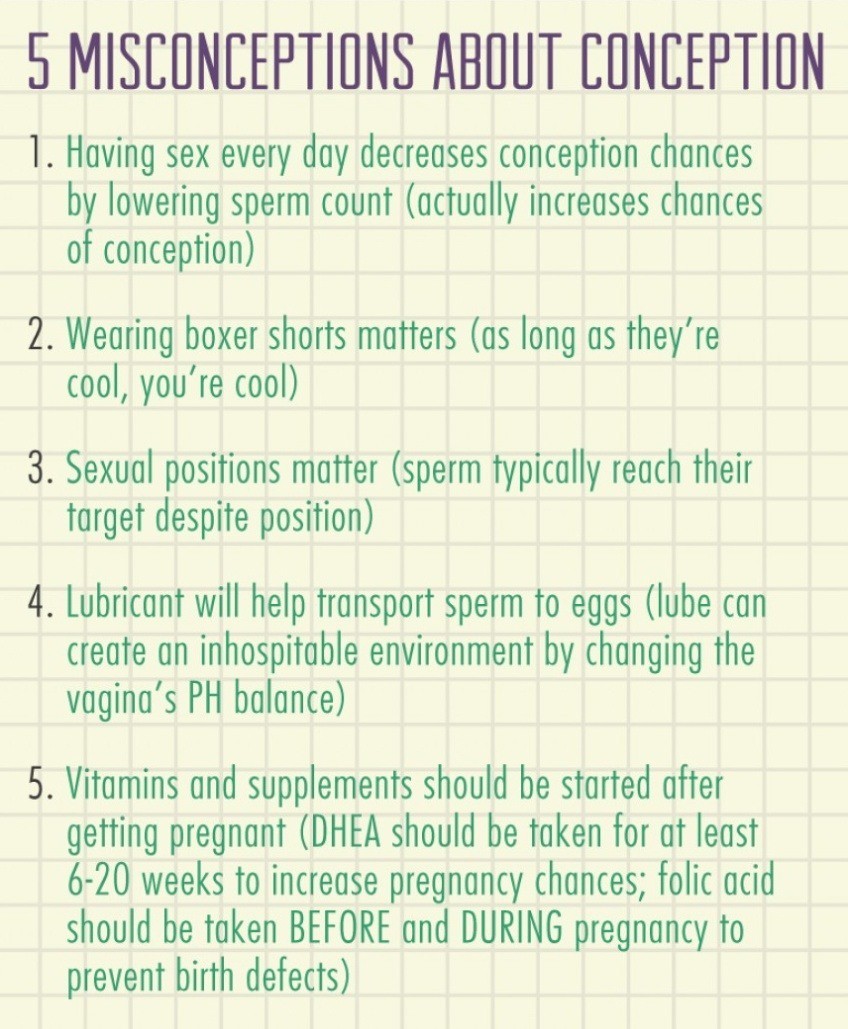 Commonly believed misconceptions about reproduction, fertility and Infertility treatment are far to common; it is vital that accurate information about reproduction, fertility and infertility treatment becomes common knowledge. A new study reveals that many U.S. women hold misconceptions about the basics of baby-making and the female reproductive system.
Commonly believed misconceptions about reproduction, fertility and Infertility treatment are far to common; it is vital that accurate information about reproduction, fertility and infertility treatment becomes common knowledge. A new study reveals that many U.S. women hold misconceptions about the basics of baby-making and the female reproductive system.
In a Web-based survey of 1,000 women ages 18 to 40 from across the United States, half of the respondents incorrectly believed that having sex more than once per day would increase their chances of getting pregnant, and more than one-third believed that certain positions during intercourse would similarly boost their chances.
The study also revealed that about 20 percent of women were unaware that aging has a negative effect on reproductive success, 30 percent didn't know that exposure to a sexually transmitted infection may impact their fertility, and 40 percent believed women continue to make new eggs, rather than being born with a finite supply, according to the study, published (Jan. 27) in the journal Fertility & Sterility.
Health – Eating habits and weight have no bearing on fertility
Poor nutrition can have an impact on fertility. Women with a Body Mass Index (BMI) over 30 or those who are severely underweight may have difficulties with fertility. The same issues impact male fertility bad heating habits; lifestyle and weight affect the quality and quantity of sperm.
We have sex often enough to get pregnant
Even someone very fertile and her partner, both in their 20s and in perfect health, will, at best, have about a 25% chance of conceiving in any given month, even with perfectly timed intercourse.
Age and Fertility
The current social climate seems to have caused women to delay childbearing. Only about 1% of first-time mothers were 35 or older in 1970; this number increased eightfold to about 8% in 2006. These same social and economic forces that have contributed to this reality have also led many women to believe that fertility typically lasts into their 40s. Data suggests that the overall risk for infertility — defined as more than one year of regular unprotected intercourse without conception — increases with age. See infographic on the right
There's no rush to see a specialist
The old rule of thumb that most people believe is to see a fertility specialist if you have not conceived after one year of trying. This rule was true when people were trying to start their families at a much younger age. If you are younger than 35 with no other health issues you may follow this benchmark. But anyone older than 35, or anyone with any gynecologic or medical problems (irregular or painful periods, diabetes, thyroid problems, or just about anything else), should seek evaluation by a fertility specialist or her ob-gyn as it may be nearly impossible to conceive without some medical intervention.
Fear of treatment “It’s gotta be me” or “I am alone”
- Infertility affects male and female reproductive systems equally.
- The inability to get pregnant or maintain a healthy pregnancy affects about 11 percent of American women between ages 15 and 44, according to a report last summer by the Centers for Disease Control and Prevention.
- About 70 percent of women said the inability to get pregnant made them feel flawed, and 61 percent hid their infertility from family and friends, according to a 2010 survey by the pharmaceutical firm Merck.
- About 10 to 20 percent of pregnancies in women younger than 35 end in miscarriage.
Fear of the cost of Fertility Treatment
- 85-90% of infertility cases treated with drug therapy or surgical procedures
- Fever than 3% of infertility cases need technologies like in Vitro Fertilization
- Of those treated for infertility 67% will go on to have a baby
Fertility treatment means I'm going to end up like Octomom
While multiple pregnancies have always been the biggest risk of fertility treatment, professional fertility organizations have been working to reduce multiple pregnancies since the early 1990s. For example, guidelines for the number of embryos to transfer have helped reduce the IVF "triplet-or-more" rate by more than 70% since the late 1990s, with only less than 2% of IVF pregnancies in that category in 2008. A good fertility doctor can, and will, work with you to try and to avoid an aggressive treatment plan, but he will also be honest with you about your chances and when it's time to try something with a bit more oomph.
Sources
Women Hold Many Misconceptions About Baby-Making – livescience.com
By Bahar Gholipour, Staff Writer | January 27, 2014 09:00am ET